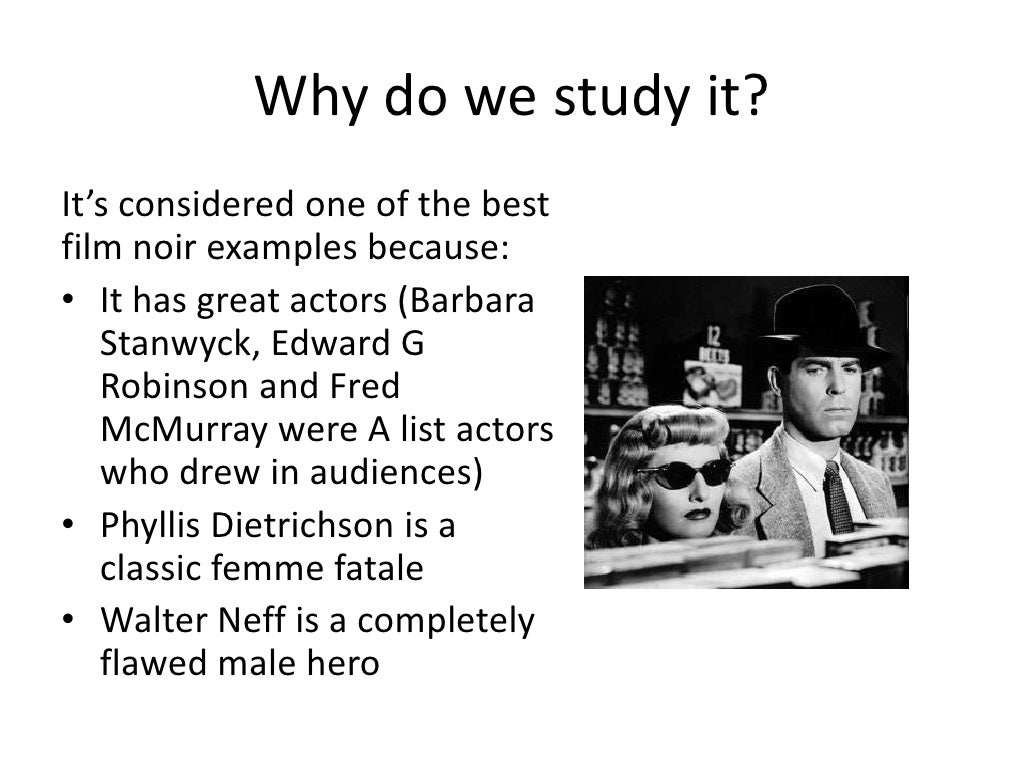

In celebration of its greatness, here are 10 facts about how Double Indemnity got made, and what came after.

The film is a masterpiece in the filmographies of Wilder and stars Barbara Stanwyck and Fred MacMurray, and is arguably the first true example of that classic Hollywood subgenre known as film noir. But when it finally got released in 1944, film history was made. Eventually, the story made its way into the hands of then-fledgling director Billy Wilder, who saw something special in it.ĭouble Indemnity had to fight objections to its content, two screenwriters who hated working together, two stars who weren’t sure they could handle their respective roles, and an ending that had to be changed.
#Double indemnity analysis code
The story quickly made its way to Hollywood, where the strict moral guidelines of the Production Code placed it on the back burner. Cain wrote a novella about an insurance salesman who falls for another man’s wife, and agrees to help her kill him so they can be together. The prohibition regarding all things sexual meant that writers were forced to use innuendo and metaphors to suggest sexual themes, something we see in spades in the example here in Double Indemnity.In the mid-1930s, journalist-turned-novelist James M. (having in mind the effect which a too-detailed description of these may have upon the moron) Brutality and possible gruesomeness Technique of committing murder by whatever method Methods of smuggling Third-degree methods Actual hangings or electrocutions as legal punishment for crime Sympathy for criminals Attitude toward public characters and institutions Sedition Apparent cruelty to children and animals Branding of people or animals The sale of women, or of a woman selling her virtue Rape or attempted rape First-night scenes Man and woman in bed together Deliberate seduction of girls The institution of marriage Surgical operations The use of drugs Titles or scenes having to do with law enforcement or law-enforcing officers Excessive or lustful kissing, particularly when one character or the other is a “heavy.” The use of the flag International relations (avoiding picturizing in an unfavorable light another country’s religion, history, institutions, prominent people, and citizenry) Arson The use of firearms Theft, robbery, safe-cracking, and dynamiting of trains, mines, buildings, etc. Pointed profanity - by either title or lip - this includes the words “God,” “Lord,” “Jesus,” “Christ” (unless they be used reverently in connection with proper religious ceremonies), “hell,” “damn,” “Gawd,” and every other profane and vulgar expression however it may be spelled Any licentious or suggestive nudity-in fact or in silhouette and any lecherous or licentious notice thereof by other characters in the picture The illegal traffic in drugs Any inference of sex perversion White slavery Miscegenation (sex relationships between the white and black races) Sex hygiene and venereal diseases Scenes of actual childbirth - in fact or in silhouette Children’s sex organs Ridicule of the clergy Willful offense to any nation, race or creed Īnd be it further resolved, That special care be exercised in the manner in which the following subjects are treated, to the end that vulgarity and suggestiveness may be eliminated and that good taste may be emphasized: Resolved, That those things which are included in the following list shall not appear in pictures produced by the members of this Association, irrespective of the manner in which they are treated: Here is a partial list of some prohibited items: One interesting side note: The emergence of subtext in dialogue was hastened by the adoption of the Motion Picture Production Code in 1934. But this is clearly the first step in her efforts to ensnare Neff in her plan to have him kill her husband. Of course, Phyllis has to play hard to get - if she immediately fell into Neff’s arms, he’d be suspicious of her motives. Great stuff, each character trying to top the other in their little dance of seduction, the dialogue courtesy of screenwriter-director Billy Wilder and the great Raymond Chandler, based on the novel “Three of a Kind” by James M.


 0 kommentar(er)
0 kommentar(er)
